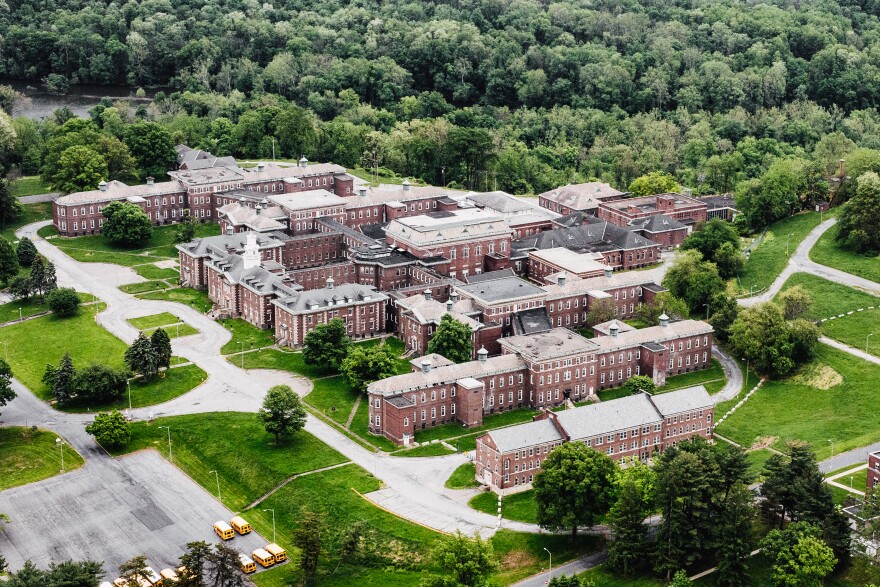ALLENTOWN, Pa. — Environmental concerns are the latest hurdle developers must clear as plans progress to transform the former Allentown State Hospital site into a $1 billion mixed-use community.
Former dry cleaning and firefighting training facilities, an incinerator that left behind cancer-causing chemicals, a wastewater treatment plant and a 1,000-gallon underground storage tank are just some of the possible issues outlined in a remediation plan site developer City Center submitted late last year to the state Department of Environmental Protection.
However, of seven recognized areas of concern outlined in previous environmental studies of the site, City’s Center’s consultant, Synergy Environmental Inc., found only one in need of further investigation following remediation by the state — soil that may contain petroleum compounds, alongside vapor mitigation in a building.
More than a decade after the 100-year-old psychiatric hospital closed, City Center is closer than ever to transforming the 200-acre property on the city’s East Side, near the border of Bethlehem, into a $1 billion community dubbed “Northridge,” with residential and senior housing, a charter school, veterans’ hospital and a warehouse, among other facilities.
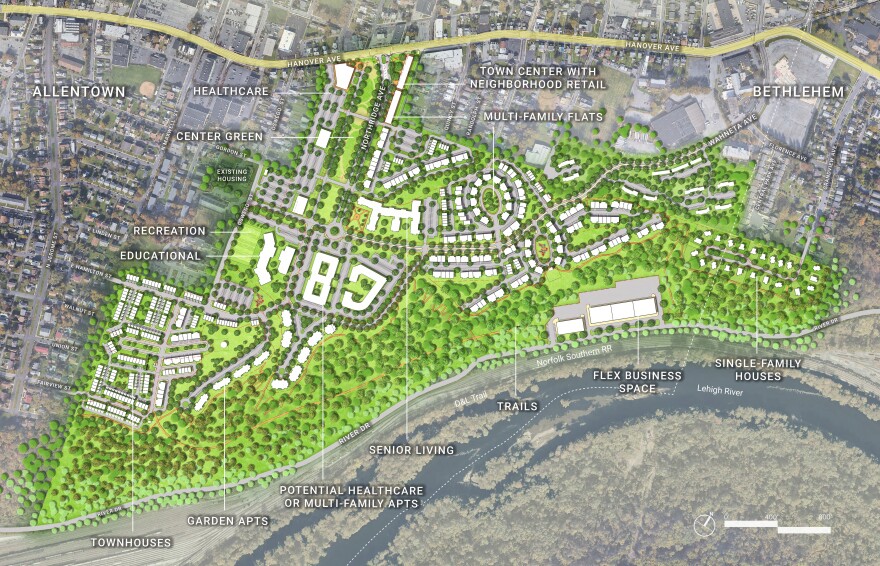
As part of the process, just weeks after city officials rezoned the property, City Center on Dec. 22 submitted a “Remedial Investigation Work Plan” to the state DEP for review.
"Before we start to develop the site, we will work with Synergy Environmental and the DEP to make sure the land meets all PADEP regulatory requirements."Robert DiLorenzo, senior project manager for City Center
“Before we start to develop the site, we will work with Synergy Environmental and the DEP to make sure the land meets all PADEP regulatory requirements." said Robert DiLorenzo, senior project manager for City Center.
One area of potential concern from 2018 environmental testing had been the presence of dioxins in the soil. Dioxins are a group of toxic chemical compounds that take a long time to break down in the environment, and can cause health problems in people.
The work plan, which included information on two rounds of soil testing, showed no dioxins on the hospital grounds.
“We are pleased that the Act 2 Work Plan which we provided to DEP for their review shows no dioxin contaminated soil on site,” DiLorenzo said.
“As our soil testing continues, we will continue to consult with the DEP and continue to incorporate their comments into our testing.”
State officials are reviewing the remedial work plan, DEP Press Secretary Josslyn Howard said. But she noted that it's not an official "Act 2 plan," which would be required to take part in the state’s land recycling program.
The commonwealth's Land Recycling Program, also called Act 2 and signed into law in 1995, set statewide cleanup standards for old industrial sites and brownfields, provides special incentives for developing abandoned sites and releases liability when cleanup standards are met, among other other guidelines.
While City Center officials have said they intend to take part in the Act 2 program, next steps aren't clear yet.
LehighValleyNews.com requested comment from City Center about those details, and when it plans to enter the state’s land recycling program, but did not receive a response in time for publication.
‘A once-in-a-lifetime revitalization’
Allentown State Hospital, formerly known as the Homoeopathic State Hospital for the Insane, was built in 1912 at 1600 Hanover Ave. and served as a psychiatric hospital until 2010.
The sprawling campus included 44 buildings, including ancillary structures such as sheds, gazebos, dumpsters, as well as a system of utility tunnels, water reservoirs and a wastewater treatment plant.
A September 2020 report on the city's website, the “Reuse Feasibility Study for Allentown State Hospital," details three unregulated landfills and soil steeped in cancer-causing chemicals at the site.
It also flagged higher-than-acceptable concentrations of arsenic, lead and cobalt found in the soil, as well as lead and aluminum detected in the groundwater.
“There have been multiple Recognized Environmental Conditions (RECs) identified in both the main hospital campus buildings and throughout the property itself,” the report says.
“If left unabated, these RECs would have the potential to significantly impede redevelopment of the property or limit the types of uses that could be supported at the site.”
The 91-page document also outlines the history of the property, as well as the environmental conditions present at the time the study was conducted.
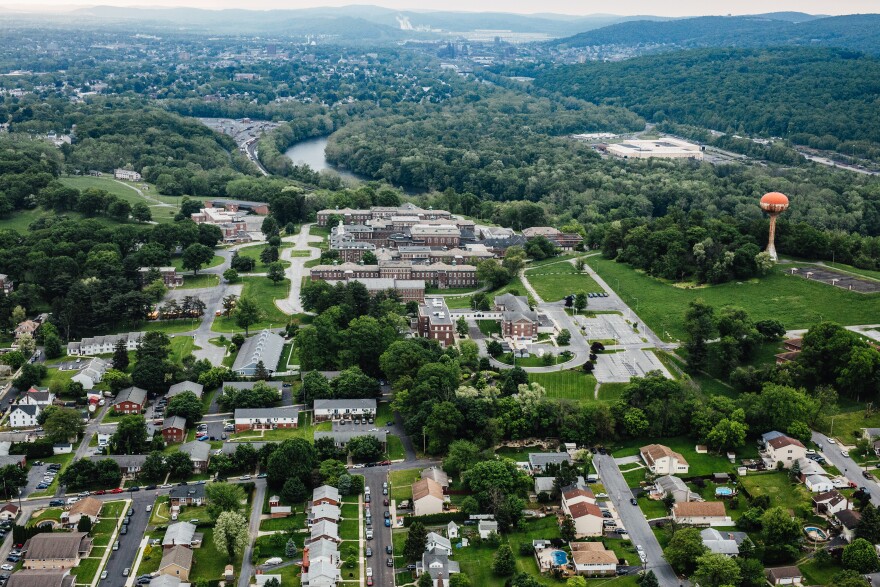
The report describes the property as “the largest site available for development” in the city.
Demolition and remediation
Demolition began on the state-owned land in December 2020. City Center bought the 195-acre property in September 2022 for about $5.5 million after then-state Sen. Pat Browne introduced a bill to facilitate the sale.
Officials at the state Department of General Services, which owned the property before City Center, said it spent $12.7 million remediating the site before the sale, including $46,000 for dioxin abatement.
“The total cost of the project was $12,721,000, including demolition, removal of above and underground storage tanks, hazardous material abatement and excavation of dioxin-contaminated soils and came from the Commonwealth’s Public Improvement Project funding,” said Eric Veronikis, communications director for DGS. “Construction started in May 2020 and was completed in November 2021.”
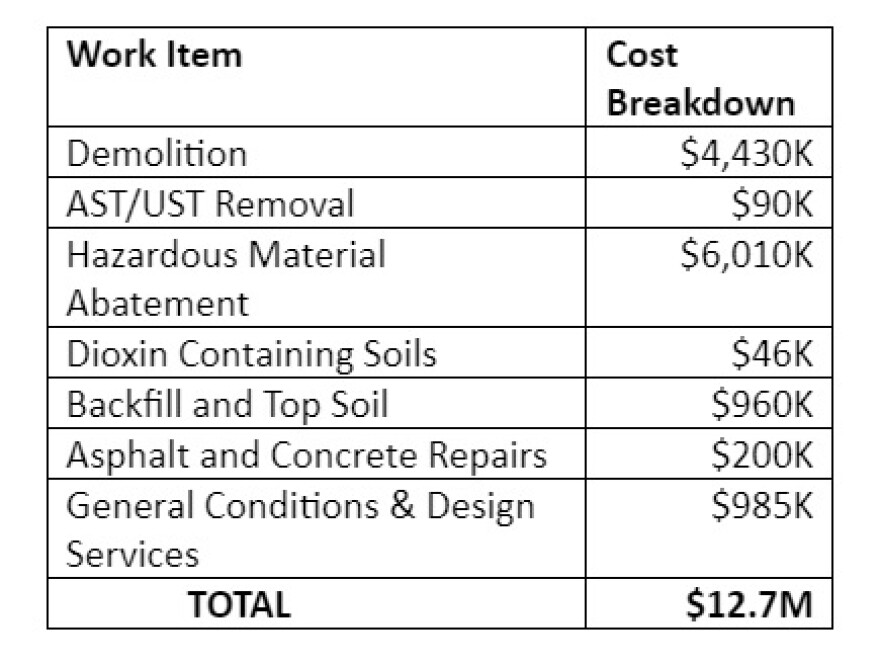
There was no public announcement of the remediation plan, per DGS policy. Veronikis said in an email that prior to the site’s sale, documents were posted on the state’s bidding and contract website, Emarketplace, and were available publicly.
“DGS did not publicly announce the completion of remediation work at this site because it is not the department’s practice to publicly announce the completion of individual construction, demolition and remediation project components,” he added.
Colleen Connolly, regional communications manager with the DEP, confirmed state environmental officials “conducted several site visits during the demolition process and no violations were found."
She said that asbestos remediation at the site was completed in 2021.
ASH Asbestos Notification by lehighvalleynews on Scribd
What are dioxins?
Dioxins are highly toxic and can cause cancer, reproductive and developmental problems, damage to the immune system and can interfere with hormones, according to the Environmental Protection Agency.
“Once dioxins enter the body, they last a long time because of their chemical stability and their ability to be absorbed by fat tissue, where they are then stored in the body,” according to the World Health Organization. “Their half-life in the body is estimated to be seven to 11 years.
“In the environment, dioxins tend to accumulate in the food chain. The higher an animal is in the food chain, the higher the concentration of dioxins.”
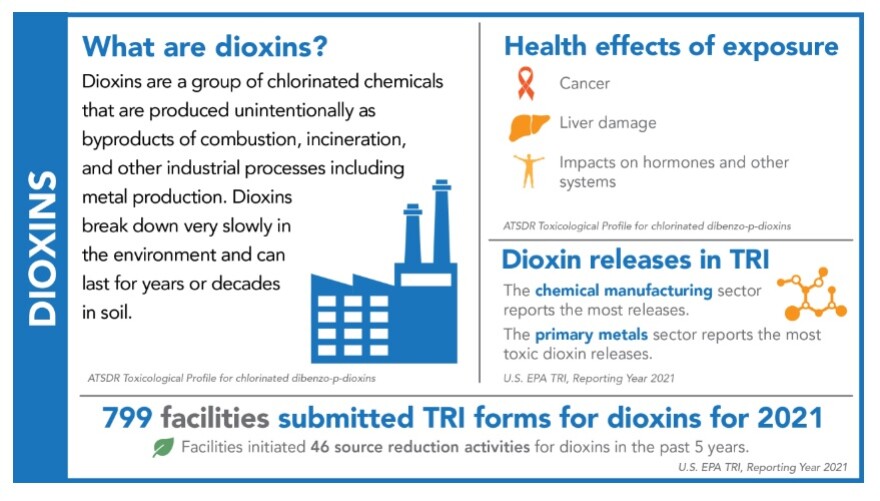
Incineration at temperatures above 1,200 degrees Celsius — a whopping 2,192 degrees Fahrenheit — is considered the most effective way of destroying dioxins, according to the federal Contaminated Site Clean-Up Information website, developed by the EPA.
Conflicting findings
While the state DGS confirmed dioxin-contaminated soil was removed, there are conflicting consultants' reports about whether or not the soil on the property — at a former incinerator waste ash area — contained dioxins.
Soil analysis in 2018 by KCI Technologies, an environmental consulting firm, showed dioxins.
But City Center’s firm, Synergy, said KCI was incorrect, citing soil samples from a 2020 study completed by Brightfields, a Wilmington-based environmental consultant.
ACT 2 Workplan.fnl.6-26-23 (1) by lehighvalleynews on Scribd
“Be advised that this location’s misidentified environmental status identified it as a ‘Dioxin Area’ and therefore has an incorrect and unwarranted stigma attached to it,” according to the report.
Asked for an explanation about the conflicting test results, Veronikis said, “The scope of work for the Design-Build contract was based on KCI’s Phase II ESA soil sample data, the incinerator ash was assumed to be dioxin contaminated.”
A request for comment from KCI was not returned.
“Sampling occurred in May of 2020 for the former incinerator area and results indicated that concentrations were below PA DEP cleanup standards,” Veronikis said. “The project team determined no additional investigation or remediation was necessary based on the 2020 confirmatory soil sampling.”
‘Scope of work’
The scope of work included in City Center’s plan includes seven sections, divided into areas of concern identified from the 2020 reuse feasibility study.
While consultants suggest further soil investigation and vapor mitigation at the former dry cleaning area, they say several concerns have already been eliminated: the incinerator waste ash area; waste coal deposit areas; an area for oil and maintenance chemical usage and storage; and an undocumented, unregulated 1,000-gallon underground storage tank.
No further action or investigations are suggested for the former fire brigade training area, as well as the wastewater treatment plant, according to the plan.

A project schedule is also included, outlining an anticipated five weeks for the DEP to review the plan before revising the plan as needed.
If more remediation is required, City Center would complete it, DiLorenzo told LehighValleyNews.com.
“At that time, we would submit a Notice of Intent to Remediate, NIR, to the PA Department of Environmental Protection, PADEP, to obtain a Release of Liability, ROL," he said. "We intend to pursue the Statewide Health Standards (SHS).”
City Center executives have said the new development would include apartments, townhouses, duplexes/triplex/fourplexes, cottages, single-family homes, and senior living options to address what they are calling the “missing middle” of the region’s real estate market.
City Center is expected to submit its tentative plans for the property to the Allentown Planning Commission in the second quarter of this year.

